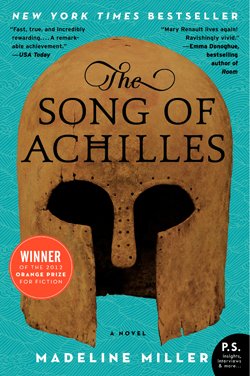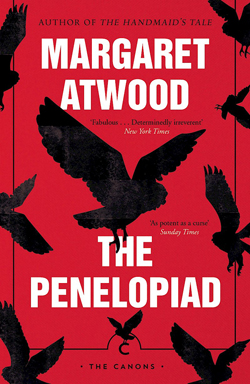There is a reason why myths and legends become myths and legends – they are great stories. They often have primal, elemental concerns and inspiring characters and speak to something fundamental in our understanding of humanity. Every society has its creation myth, for example.
It is not surprising, therefore, that artists return to myths and legends again and again. Look at the way British Arthurian legend has come all the way from Mallory, the Gawain Poet, pre-Raphaelite painting and Monty Python to Ishiguro’s The Buried Giant.
 Now Mark Haddon, he of The Curious Incident of the Dog in the Night Time fame, has returned to dogs, and other monsters, in a collection of short stories which revisit myths and legends. He retells the Greek myths of the Minotaur, the death of Actaeon and Tithonus’ love for Eos, as well as the temptation of St Anthony. In them, Haddon re-examines and refines the monstrous.
Now Mark Haddon, he of The Curious Incident of the Dog in the Night Time fame, has returned to dogs, and other monsters, in a collection of short stories which revisit myths and legends. He retells the Greek myths of the Minotaur, the death of Actaeon and Tithonus’ love for Eos, as well as the temptation of St Anthony. In them, Haddon re-examines and refines the monstrous.
The Guardian review sings high praise:
These delicately worked and impressively patient stories show us what other visions might reveal themselves when we are not in too much of a hurry to get to the end.
Haddon follows a well-worn path. Think of Milton’s Homeric epic version of the Christian fall of man in Paradise Lost, with its surging language and rhythms and its heroic characterisation and speeches of Satan:
Fallen Cherub, to be weak is miserable,
Doing or suffering: but of this be sure,
To do aught good never will be our task;
But ever to do ill our sole delight:
As being contrary to his high will
Whom we resist.
Robert Graves gave us the scholarly examination of the Greek stories in his The Greek Myths, which are often the source for later writers. Some of the most interesting versions have been from writers who not only retell the myths, but reread them by shifting the accepted perspective.
 Take Madeline Miller, whose first novel, Song of Achilles, was described by Time magazine as ‘a sexy new narrative spin on the ancients that is surprisingly suspenseful’. The story of Achilles, hero of the Trojan War, is narrated from the perspective of Patroclus. There has long been an acceptance of an implicit romantic relationship between the two men, but Miller makes this explicit and central to the novel.
Take Madeline Miller, whose first novel, Song of Achilles, was described by Time magazine as ‘a sexy new narrative spin on the ancients that is surprisingly suspenseful’. The story of Achilles, hero of the Trojan War, is narrated from the perspective of Patroclus. There has long been an acceptance of an implicit romantic relationship between the two men, but Miller makes this explicit and central to the novel.
Her follow-up, Circe, reimagines the witch-like figure of Homer’s Odyssey who turns men into pigs. In her feminist version, Miller focuses on Circe herself, giving her a voice and exploring her background to characterise her as a powerful, independent woman.
Find out more on Madeline Miller’s website and read a review here.
Pat Barker too covered this kind of ground in The Silence of the Girls, which explores the Trojan War from the perspective of Briseis, captured by the Greeks and assigned to Achilles as sexual plunder from the war. She watches at close hand the relationship between Patroclus and Achilles, and Achilles’ reaction to Partoclus’ death. Here’s a review.
 And then you have the Canongate Myth Series, where a number of writers were directly commissioned to reimagine myths. We have the Greeks again here, especially in Margaret Atwood’s take on the Odyssey, The Penelopiad. The focus here is not on Odysseus, returning to from his wanderings to find his faithful wife at home, but on Penelope herself and her twelve handmaidens who are killed by Odysseus’ son. Atwood uses them as a chorus, interrupting Penelope’s narrative with interludes in vastly different styles. Penelope herself is sharp, hiding the fact that she recognises her husband despite his disguise:
And then you have the Canongate Myth Series, where a number of writers were directly commissioned to reimagine myths. We have the Greeks again here, especially in Margaret Atwood’s take on the Odyssey, The Penelopiad. The focus here is not on Odysseus, returning to from his wanderings to find his faithful wife at home, but on Penelope herself and her twelve handmaidens who are killed by Odysseus’ son. Atwood uses them as a chorus, interrupting Penelope’s narrative with interludes in vastly different styles. Penelope herself is sharp, hiding the fact that she recognises her husband despite his disguise:
… if a man takes pride in his disguising skills, it would be a foolish wife who would claim to recognize him: it’s always an imprudence to step between a man and the reflection of his own cleverness.
The Canongate series does not restrict itself to the ancient Greeks, however, with versions of Christian, Japanese, Amazonian, Chinese, Mesopotamian, Norse, Slavic, Asian and Celtic mythology. Now that must be worth exploring.